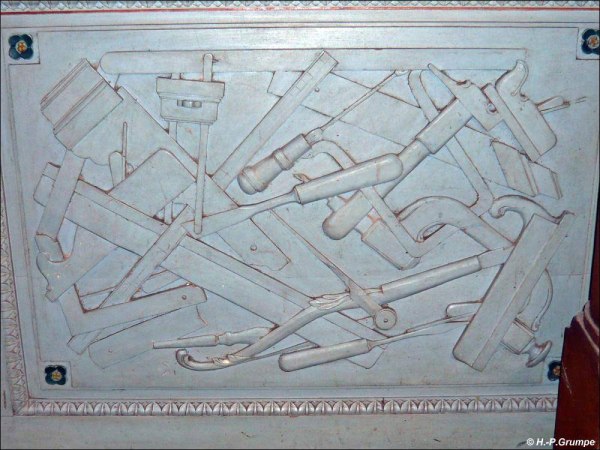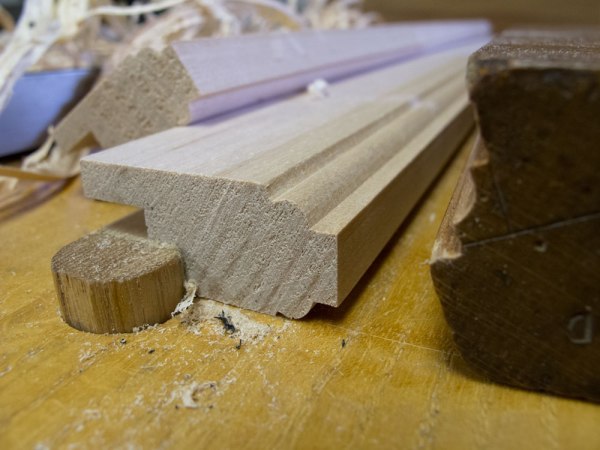After you make a bunch of these 16th-century squares, two things become apparent.
1. Gee, these squares are handy, compact and easy to use when scribing lines on work that has been trued up.
2. Gee, these squares are a pain to true up because of all the end grain in the handle.
In fact, truing them up is the only difficult thing about making them. If I’m careful when I build them, then they come out of the clamps dead square and ready for a coat of finish. If they aren’t square, it usually takes me about 15 to 20 minutes of fussing around to get them square. You have to bevel off the moulding profiles on the handle with care so you don’t spelch the corners when truing things up.
The best plane for this task is a heavy jointer, which has the inertia to plow through 2” x 2” of end grain without complaining.
When truing up my fifth or sixth square, I thought about making the blade a little wider than the handle – like an 18th-century wooden try square. That would make the square a piece of cake to true up – no end grain. But none of the images in my library showed that detail.
Jeff Burks to the rescue.
 One of the coolest images Jeff dug up is from a Romanian fortified church in Biertan. The pews are decorated with carved tools from the craft guild that built the church furnishings. Construction on the church began in 1468 and continued into the 16th century. Jeff and I have been discussing whether the carving of the tools is indeed from the 16th century or might be later.
One of the coolest images Jeff dug up is from a Romanian fortified church in Biertan. The pews are decorated with carved tools from the craft guild that built the church furnishings. Construction on the church began in 1468 and continued into the 16th century. Jeff and I have been discussing whether the carving of the tools is indeed from the 16th century or might be later.
In any case, the Melencolia square shown in the sculpted grouping of tools has its blade wider than the handle. Score.
If you’d like to investigate this church some more, Jeff provided these links. Here’s the set of photos where that original image came from. You can read more about Biertan here. Warning, it will make you want to visit. And so don’t read these travel blogs on Biertan here and here.
So I have one more square to make. Then I really have to stop fooling around with these squares and start building a big piece of casework on my calendar.
— Christopher Schwarz
P.S. I posted a couple of SketchUp drawings of these squares on my blog at Popular Woodworking Magazine. Here’s the link. Other stories in this too-long series:

























